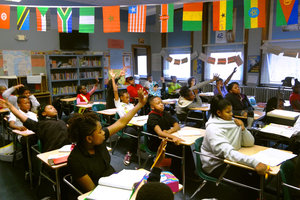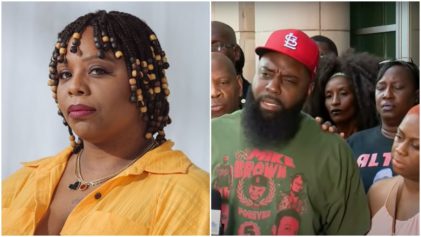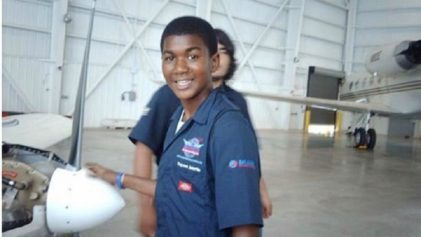In this time of Michael Brown and Eric Garner, classroom discussions have changed. Even in the sixth grade, a run-through of the legacy of Martin Luther King is going to have to deal with the current realities of race.
When the teacher is white and all the students are Black, the optics of the discussion can get a bit complicated. In a profile on NPR of Peter Maginot’s sixth-grade class at the Shabazz Public School Academy—described by NPR as an Afrocentric school in Lansing, Mich.—young Black males like Trayvon Martin and Michael Brown are specters that hang over the class. The young boys in the class know the fates of Trayvon and Michael could all-too-easily be their own.
They talk about these things at home with their families, but they also discuss them at school with this white teacher. He thinks it’s important that they do.
“It’s really heavy stuff, and it can be really hopeless at times,” says Maginot, whose class was supposed to be about leadership. “But I think it’s important that they at least have exposure to [these conversations] and have the opportunity to kind of talk about their issues.”
These are the challenges of teaching a class of inquisitive children at an explosive time. All over America, teachers are finding out they can’t run away from race. Current events have gotten pretty heavy.
“Who can tell me the facts that we know about Mike Brown?” Maginot asks the class.
One student answers: “Mike Brown, he was shot and killed by a white man.”
Another student says, “He didn’t have any weapons, and he was walking down the street.”
“He was a teenager,” a third student says.
According to NPR, Maginot gave them differing perspectives, such as the statements from Officer Darren Wilson that he was being attacked when he shot Brown. But Maginot doesn’t stop with the problem—he pushes his class into offering solutions.
“We have talked about racial profiling,” he says to the class. “We’ve explained it all the way through. But who thinks they have a solution?”
On a bulletin board at the back of Maginot’s class are photos of Trayvon Martin, Eric Garner and Michael Brown stapled on the board, with the letters “R.I.P.” written in black marker over each picture.
“It’s like messed up, because it’s just really Black people getting killed a lot,” says Zyon Adams, 11. “And really, you don’t usually see a lot of white people in those types of problems.”
Asked how that makes him feel, Zyon says, “Scared and upset. Because it might happen to me one day. I could be one of the people on the posters saying ‘RIP’ with my picture right under it.”
As solutions, the students throw out ideas like hanging up posters, going on field trips to schools with white kids and talking with them.
Zyon has his own ideas. He’s thinking about becoming a lawyer (before becoming a part of Maginot’s sixth-grade class, he wanted to be a paleontologist). He wants to represent young Black men who get in trouble. He wants to help people, to explain their case by telling the truth every time.
“Justice, that’d be nice,” Zyon says.



